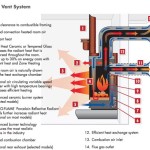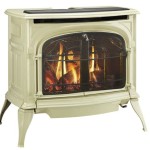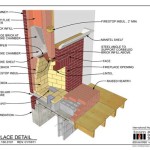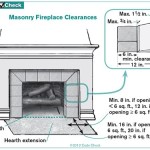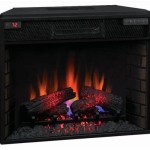Cast Iron Gas Fireplace Packages: A Comprehensive Guide
Cast iron gas fireplace packages represent a popular choice for homeowners seeking an efficient and aesthetically pleasing heating solution. These packages offer a blend of traditional charm and modern convenience, providing warmth and ambiance with the ease of gas operation. This article will delve into the various aspects of cast iron gas fireplace packages, including their benefits, components, installation considerations, maintenance requirements, and common styles.
A cast iron gas fireplace package typically comprises several key components designed to work together seamlessly. The primary element is the cast iron firebox, which houses the gas burner and simulated logs. The firebox is often intricately designed, featuring detailed castings and a durable finish. The gas burner itself is engineered for efficient combustion, producing realistic flames and consistent heat output. Simulated logs, crafted from ceramic or other heat-resistant materials, are arranged to mimic the appearance of a traditional wood-burning fire. The package also includes a gas valve and control system, allowing users to adjust the flame height and heat output. A vent or flue system is essential for safely exhausting the combustion gases. Some packages include decorative surrounds or mantels to enhance the aesthetic appeal of the fireplace. These components are designed to work together to provide a complete and functional fireplace unit.
Understanding the Advantages of Cast Iron
Cast iron offers several advantages as a material for fireplace construction. Its inherent durability is a key benefit. Cast iron is known for its ability to withstand high temperatures and resist warping or cracking, ensuring a long lifespan for the fireplace. This material also distributes heat evenly, providing consistent and efficient heating throughout the room. The thermal mass of cast iron allows it to retain heat for an extended period, even after the gas burner is turned off, further enhancing its efficiency. Beyond its functional properties, cast iron offers aesthetic appeal. Its ability to be molded into intricate designs allows for a wide range of decorative styles, from classic to contemporary. The robust nature of cast iron ensures that it maintains its structural integrity and aesthetic qualities for many years, making it a valuable investment for homeowners.
Key Components of a Gas Fireplace Package
A detailed understanding of the components within a cast iron gas fireplace package is crucial for making informed decisions during purchase and installation. The firebox, constructed from cast iron, is the central element, providing a durable and aesthetically pleasing enclosure for the flames. The gas burner, typically made of stainless steel or cast iron, is designed for efficient and clean combustion of natural gas or propane. The simulated logs, usually crafted from ceramic fiber, are carefully arranged to mimic the look of a real wood fire, often with realistic details such as bark and knots. The gas valve regulates the flow of gas to the burner, allowing for precise control of the flame height and heat output. A control system, which can range from simple manual controls to sophisticated remote controls or thermostats, allows users to operate the fireplace with ease. The venting system, which can be either direct vent or B-vent, is responsible for safely exhausting combustion gases outside the home. Each component plays a vital role in the overall performance and safety of the fireplace.
The venting system of a gas fireplace is a critical component for ensuring safe operation. Direct vent systems draw air from outside the home for combustion and exhaust gases back outside through a sealed system. This type of venting is often preferred because it does not require a chimney and can be installed in a variety of locations. B-vent systems, on the other hand, rely on a chimney to exhaust combustion gases. These systems require a dedicated vent pipe and are typically used in homes with existing chimneys. Proper installation of the venting system is essential for preventing carbon monoxide poisoning and ensuring efficient operation of the fireplace. Local building codes often dictate the type of venting system required and the specific installation procedures that must be followed.
The control systems for cast iron gas fireplaces have advanced significantly in recent years. Simple manual controls, such as knobs or switches, allow users to adjust the flame height and heat output. Remote controls offer added convenience, allowing users to operate the fireplace from across the room. Thermostatic controls maintain a consistent room temperature by automatically adjusting the flame height as needed. Some advanced systems include programmable timers and smart home integration, allowing users to control the fireplace remotely via a smartphone or tablet. The choice of control system depends on individual preferences and the level of convenience desired.
Installation Considerations and Safety
Proper installation is paramount for the safe and efficient operation of a cast iron gas fireplace. It is highly recommended that installation be performed by a qualified and licensed professional. This ensures that all gas connections are properly sealed, the venting system is correctly installed, and the fireplace meets all local building codes. Before installation, it is crucial to verify that the fireplace is compatible with the available gas supply, either natural gas or propane. The gas line must be properly sized to provide adequate gas flow to the burner. The installation area must be free of combustible materials and adhere to minimum clearance requirements. A carbon monoxide detector should be installed in the vicinity of the fireplace to provide an early warning of any potential carbon monoxide leaks.
Safety considerations are of utmost importance when operating a gas fireplace. It is essential to have the fireplace inspected annually by a qualified technician to ensure that all components are functioning properly and there are no gas leaks. Keep combustible materials, such as curtains, furniture, and paper, away from the fireplace. Never use the fireplace to burn wood or other materials, as this can damage the unit and create a fire hazard. Educate all members of the household on the proper operation and safety precautions of the fireplace. Regularly check the batteries in the carbon monoxide detector to ensure that it is functioning properly. By following these safety guidelines, homeowners can enjoy the warmth and ambiance of their gas fireplace with peace of mind.
Local building codes often dictate specific requirements for the installation and operation of gas fireplaces. These codes may cover aspects such as venting requirements, gas line sizing, clearance requirements, and safety devices. It is essential to consult with local building officials to ensure that the installation complies with all applicable codes. Failure to comply with building codes can result in fines, delays, and potential safety hazards. A qualified installer will be familiar with local building codes and ensure that the installation meets all requirements.
Maintenance and Care of Cast Iron Gas Fireplaces
Regular maintenance is essential for ensuring the longevity and performance of a cast iron gas fireplace. The frequency and type of maintenance required will depend on the specific model and usage. Generally, it is recommended to have the fireplace inspected and cleaned annually by a qualified technician. This inspection should include a thorough examination of all components, including the burner, gas valve, venting system, and control system. The burner should be cleaned to remove any debris or soot that may have accumulated. The venting system should be inspected to ensure that it is free of obstructions and properly sealed. The control system should be tested to ensure that it is functioning properly. Regular cleaning of the firebox and simulated logs can help to maintain their appearance. Avoid using harsh chemicals or abrasive cleaners, as these can damage the finish. A soft cloth and mild soap and water are typically sufficient for cleaning. By following a regular maintenance schedule, homeowners can ensure that their gas fireplace provides years of reliable and efficient service.
Troubleshooting common problems can also help extend the life of your cast iron gas fireplace. Common issues include pilot light problems, such as the pilot light not staying lit, or the pilot light being difficult to light. This can often be resolved by cleaning the pilot light assembly or adjusting the gas flow. Another common problem is a weak or flickering flame. This may be caused by a dirty burner or a low gas supply pressure. Cleaning the burner or contacting a gas company to check the gas pressure may resolve the issue. If the fireplace is not producing enough heat, it may be due to a clogged burner or a malfunctioning gas valve. Consult a qualified technician for assistance in diagnosing and repairing these issues. Addressing problems promptly can prevent more serious damage and ensure the continued safe and efficient operation of the fireplace.
Selecting the right size gas fireplace for a room is also an important consideration. Overly large fireplaces can overheat a room, while undersized fireplaces may not provide adequate heat. The appropriate size of fireplace will depend on the square footage of the room, the insulation level, and the climate. A general rule of thumb is that a fireplace should provide approximately 5,000 to 10,000 BTUs per 100 square feet of living space. However, it is best to consult with a qualified professional to determine the optimal size and BTU output for a specific room.

Bedford 54 Inch Wooden Fireplace Package With Prince Cast Iron Tiled Fire Insert Direct Fireplaces

Fireplace Packages Suites Direct Fireplaces

Cast Iron Fireplace Packages Oak And Straight With Henley Arch Insert Www Castironfireplace Co

Barcelona Cast Iron Fireplace Fireplaces

Gallery Henley Cast Iron Fireplace Insert Flames Co

Bedford Wooden Fireplace Package With Coronet Cast Iron Fire Insert Surround Surrounds

Nottage Cast Iron Fireplace Fireplaces

Capped Corbel Solid Oak Cast Iron Gas Fireplace Full Package Fire Surrounds

Bartello Aegean Limestone Fireplace Package With Lytton Cast Insert Direct Fireplaces

Pureglow Stanford Fireplace With Gas Cast Insert Fire Package Supers
Related Posts


